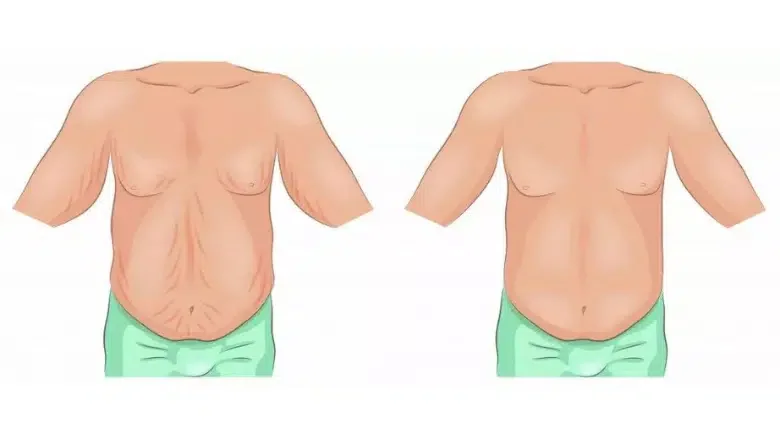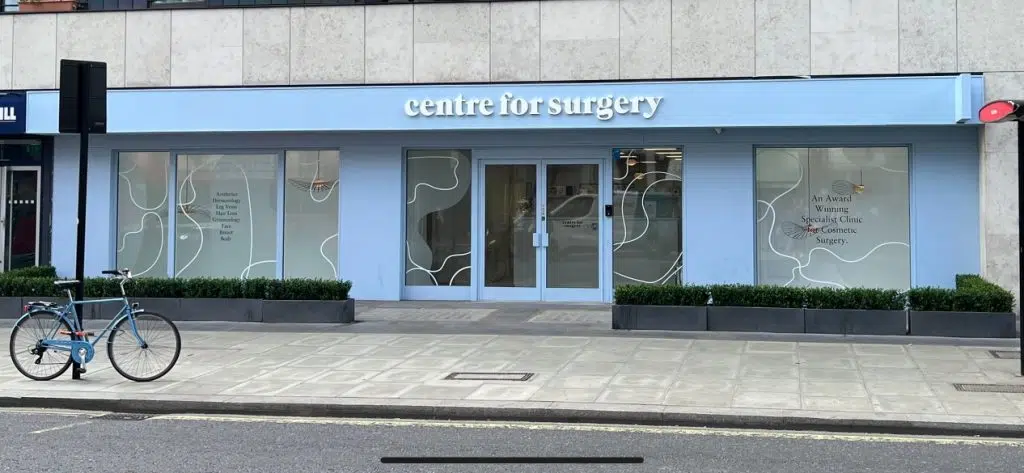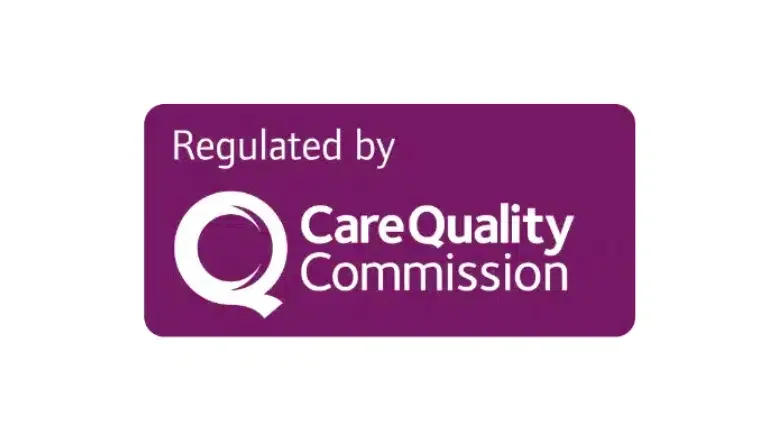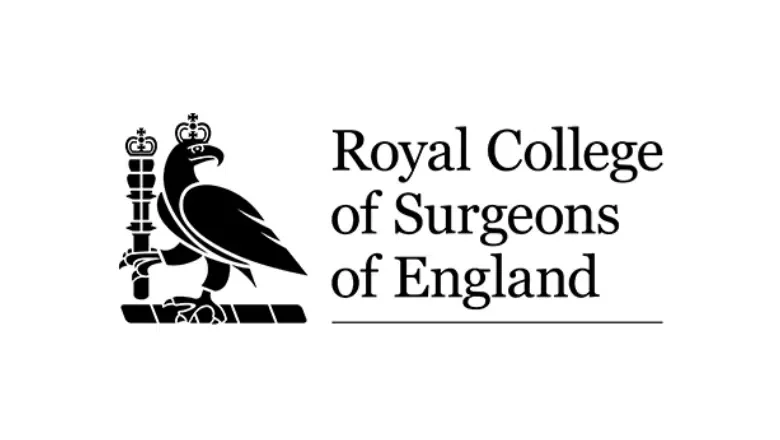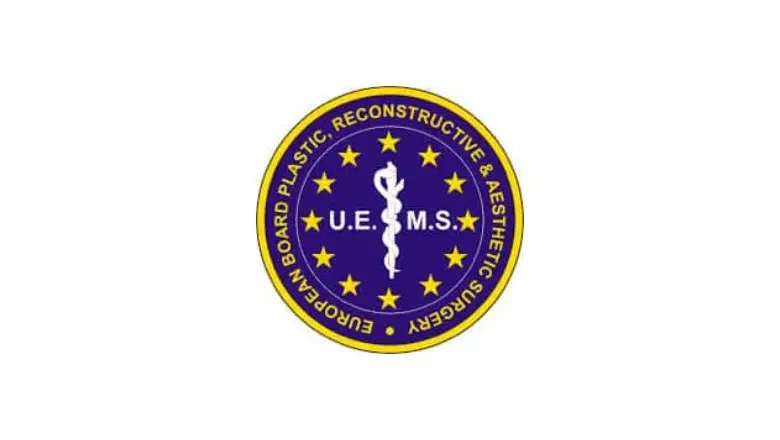What is Post-Weight Loss Surgery?
Post-weight loss surgery or excess skin removal procedures are often required after significant weight loss (usually greater than 100 pounds). Massive weight loss inevitably results in the development of excess skin, which does not return to its usual level of tightness. Excess skin removal surgery is designed to eliminate excess sagging skin to improve body contour, relieve pain and discomfort and improve clothing choices.
RELATED: What is excess skin removal?
Who is affected by excess skin?
Obesity is an increasingly prevalent health problem in developed countries. There is a range of undesirable symptoms caused by being overweight or obese. Increasingly, people turn to weight loss surgery, also known as bariatric surgery, for significant weight loss. In some cases, a strict diet and exercise can produce dramatic weight loss if carried out consistently over a period of time. Once significant weight loss has occurred, people are invariably left with excess sagging skin. When people are obese, the skin and soft tissues stretch to accommodate the excess fat deposits. The skin then becomes stretched and loses its elasticity. The stretched-out skin does not return to its usual tightness after significant weight loss and, in severe cases, may hang down as folds of skin restricting clothing choices.
Why have post-weight loss surgery?
Post-weight loss surgery, also known as body contouring surgery, can have a number of benefits for individuals who have lost a significant amount of weight. Some of the main benefits include:
- Improved body shape: After significant weight loss, the skin and underlying tissue can be loose and saggy. Body contouring surgery can remove the excess skin and reshape the body to create a more toned and proportionate appearance.
- Increased self-esteem: Many people who have lost a significant amount of weight feel self-conscious about their excess skin. Body contouring surgery can help improve their self-esteem and self-confidence.
- Improved physical mobility: Excess skin can cause discomfort and make it difficult to move around. Body contouring surgery can help to improve mobility and reduce pain.
- Improved overall health: Removing excess skin can also help to improve overall health, as it can reduce the risk of skin infections and rashes caused by trapped moisture.
- Enhancement of aesthetic appearance: Body contouring surgery can help enhance the aesthetic appearance of the body and help individuals feel more comfortable and confident in their own skin.
RELATED: How to Reduce Loose Skin on Arms, Thighs and Tummy
Am I suitable for excess skin removal surgery?
You will need to have an in-person consultation with a plastic surgery specialist to determine your suitability for post-weight loss surgery. Your surgeon will listen carefully to your needs and desires and what you hope to achieve from surgery. A detailed physical examination will then be carried out to assess your loose skin and the most appropriate procedure to get rid of it.
You may be considered a suitable candidate for post-weight loss surgery if you:
- Are able to maintain a healthy lifestyle with a sensible diet and regular exercise to help avoid weight gain
- You are able to maintain a healthy, stable weight for a minimum of six months before post weight loss surgery
- You are a non-smoker or are willing to stop smoking at least eight weeks before surgery. Smoking is associated with an increased risk of wound complications and delayed healing.
- You are in a good state of physical and mental health with no serious medical conditions that could increase the risk of surgery.
- You have realistic expectations about what can be achieved with excess skin removal surgery.
RELATED: Can Diet And Exercise Get The Same Results As Cosmetic Surgery?
Different types of post weight loss surgery and excess skin removal procedures
There are several different types of surgical procedures designed to eliminate excess skin. Your surgeon may recommend a combination of procedures to help you achieve the ideal look. You will be given customised recommendations on the most appropriate procedure or combination of procedures to allow you to make an informed decision that is right for you.
The most common excess skin removal procedures in the UK include:
- Breast lift (mastopexy) – breast lift surgery helps to tighten skin by removing excess skin to achieve better-shaped breasts.
- Abdominoplasty – also known as a tummy tuck, this procedure is designed to remove excess skin and fat and tighten weak abdominal muscles.
- Extended tummy tuck
- Fleur de Lis tummy tuck
- Belt Lipectomy
- Panniculectomy – this is a medical procedure designed to remove the apron of excess skin that often hangs well below the belly button and can be a cause of significant pain and discomfort with associated skin irritation.
- Lower body lift – this procedure involves the circumferential removal of excess skin to lift the abdomen and buttocks to a more youthful position.
- Arm lift (Brachioplasty)
- Thigh lift (thigh reduction)
RELATED: How to get rid of sagging breasts after weight loss
Significant weight loss can also cause a gaunt or sunken face. Facelift surgery is appropriate for achieving a younger look and tighter-looking skin for more defined face and neck contours.
RELATED: How are the face and neck affected by dramatic weight loss?
How to prepare for excess skin removal surgery
You will be given detailed preoperative instructions before your procedure, which will include the following:
- The need to stop smoking
- Stopping certain medications that contain aspirin as these can increase the risk of bleeding
- Avoiding vitamins or herbal products
- You’ll be required to undergo various blood tests to ensure you are medically fit for surgery.
What does post-weight loss surgery involve?
Post-weight loss surgery is performed as a day-case procedure at Centre for Surgery in London. This means you’ll be able to go home later the same day. Your surgeon will recommend procedures that keep surgical time as short as possible to reduce the risk of complications. You may be recommended to have post-weight loss surgery in several stages. Not only is it safer for you, but you will also be able to achieve better results with the ability to remove more skin when excess skin removal procedures are staged rather than performed in one sitting.
Can I have weight loss surgery and excess skin removal at the same time?
This is not possible. Excess skin removal surgery or post-weight loss surgery must be performed after bariatric surgery. Excess skin cannot be surgically removed until the excess weight has been lost. This can take between 12 and 24 months after bariatric surgery to reach your target weight. Any weight loss achieved must be maintained for a minimum of six months before you’ll be considered for post-weight loss surgery to remove excess skin.
- Bariatric surgery encompasses procedures such as gastric bypass and gastric sleeve surgery, which are performed by a specialist bariatric surgeon.
- Post-weight loss surgery is performed by specialist plastic surgeons with expertise in body contouring surgery.
Most types of excess skin removal surgery are combined with liposuction to remove stubborn areas of excess fat. Liposuction is highly effective for contouring body areas that have not improved with weight loss surgery. It is essential to bear in mind, however, that liposuction is not a type of weight loss surgery. Your surgeon will advise you if liposuction should be combined with your post-weight loss procedure to achieve optimal results.
Is post-weight loss surgery painful?
Most types of excess skin removal surgery are considered major operations. The recovery period is more lengthy compared with traditional skin removal procedures. You will be given a prescription for painkillers after your procedure to help minimise discomfort. You should arrange for a friend or relative to help look after you during the first week after surgery, as you may have discomfort when moving around the home or going up and down the stairs. Thanks to modern local anaesthetic techniques, you may be able to have a pain pump inserted at the time of surgery, which helps to keep you pain-free due to the periodic injection of a local anaesthetic to help numb the area. If you want to learn more about local anaesthetic pain pumps, ask your plastic surgeon at the consultation.
- Recovery after Arm Lift Surgery
- Recovery after Thigh Lift Surgery
- Recovery After Lower Body Lift Surgery
- Recovery After Full Body Lift Surgery
What are the risks of post-weight loss surgery?
Excess skin removal surgery, also known as post-weight loss surgery, is a procedure that is performed to remove loose, sagging skin and fat that is left behind after significant weight loss. Although it can improve the patient’s appearance and self-esteem, it is still a surgical procedure and, thus, carries certain risks. Some of the potential risks of excess skin removal surgery include the following:
- Infection: Any surgical procedure carries a risk of infection, which can occur at the incision site or in the deeper layers of tissue.
- Bleeding: There is a risk of bleeding during or after the surgery, which can lead to blood clots or haematomas.
- Scarring: Excess skin removal surgery leaves behind scars, which can be permanent and visible.
- Numbness: Numbness or tingling sensation can occur temporarily or permanently in the areas that have been treated due to nerve damage.
- Anaesthesia risks: As with any surgery requiring anaesthesia, there is a small risk of complications related to the anaesthesia.
- Delayed wound healing: In some cases, the incisions may take longer to heal, leading to complications such as infection or scarring.
- Unsatisfied results: The patient may not be satisfied with the final results of the surgery, as the outcome may not be exactly as expected.
- Weight gain: Weight gain can occur after the surgery if the patient does not maintain a healthy diet and exercise routine.
FAQs – Body Contouring after Weight Loss Questions
Navigating through the journey of weight loss often leads to the next phase of transformation – body contouring. As you explore the possibilities of skin removal surgery to refine and define your silhouette, a multitude of questions may arise. Below, we delve into some of the most commonly asked questions, offering detailed insights to guide you through your body contouring journey.
How Much Weight Loss is Necessary for Excess Skin Removal Surgery?
While there’s no universally set benchmark for how much weight one must lose to qualify for excess skin removal surgery, it’s typically pursued by individuals who have experienced significant weight reduction. This considerable decrease in weight often results in surplus skin, which can be addressed through surgical intervention. The journey is unique for everyone, and a consultation with a surgeon can provide personalised advice based on your specific situation.
When is the Ideal Time for Skin Removal Surgery Following Weight Loss?
Timing is crucial for skin removal surgery to ensure optimal outcomes. Surgeons generally advise waiting for a period of three to six months after stabilising at your new weight before considering the procedure. This waiting period allows your body to adjust and for any potential health risks to be minimised, ensuring you’re in the best possible condition for surgery.
Is Excess Skin Removal Surgery Covered by Insurance?
Coverage for excess skin removal surgery can vary significantly depending on your insurance policy and the nature of your condition. Often, if the surplus skin causes physical discomfort or predisposes you to skin infections, it may be considered a medical necessity. Consulting with your healthcare provider or surgeon can help ascertain if your situation might qualify for insurance coverage, as policies differ widely.
Will There Be Scarring After Loose Skin Removal Surgery?
Scarring is an inevitable aspect of any surgical procedure, including skin removal surgery. However, surgeons employ techniques to place incisions strategically, allowing most scars to be concealed by clothing, including undergarments and swimsuits. After surgery, there are various scar minimisation strategies and treatments available, which can be discussed with your practitioner to enhance the healing process.
How Long Does the Skin Removal Surgery Procedure Take?
The duration of a skin removal surgery can range from three to five hours, depending on the extent of excess skin and fat being removed. The complexity and scope of the procedure vary by individual, influencing the overall time spent in surgery. A consultation with a surgeon will provide a more precise estimate based on your specific needs and goals.
What are the Medical Terms for Excess Skin Removal Surgery?
Excess skin removal surgery is known within the medical community as a body lift or surgical body contouring. These procedures aim to remove unwanted skin and fat, enhance the body’s appearance and improve comfort and quality of life post-weight loss. The term ‘body lift’ encompasses various specific surgeries tailored to the needs of the individual, including abdominoplasty, thigh lift, and arm lift, among others.
Each person’s journey to body contouring after weight loss is unique, filled with personal triumphs and challenges. Armed with the right information and support from experienced professionals, you can make informed decisions that align with your health and aesthetic goals.
Post-Weight Loss Surgery at Centre for Surgery
After significant weight loss, many people are naturally concerned about the loose skin now apparent on their bodies. Excess skin can also be a source of considerable discomfort. If you are unhappy with sagging skin after weight loss, call us today at 020 7993 4849 to learn more about the different options for post-weight loss surgery. Post-weight loss surgery procedures are designed to remove excess skin and fat. A more contoured and sculpted body contour can also be achieved with tighter and firmer skin. In many cases, several excess skin removal procedures are required to fully eliminate excess skin to help achieve the ideal result.
Centre for Surgery is considered a leading plastic surgery clinic in the UK for all types of post-weight loss surgery. Post-weight loss surgery is a specialist reconstructive surgery regularly performed at our state-of-the-art Baker Street clinic in central London.

